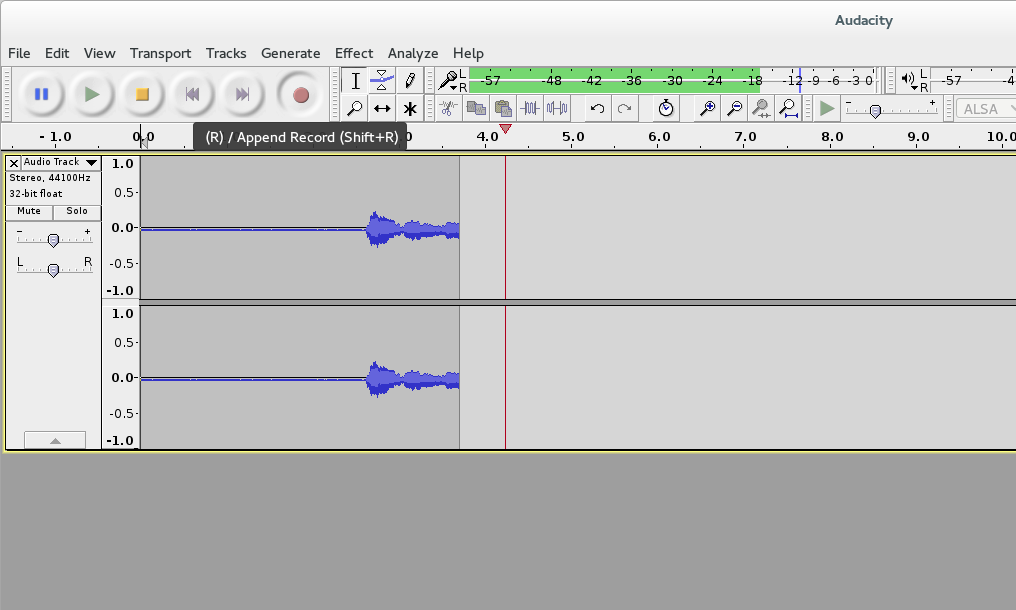How to recording yourself singing
These instructions explain the process I used to record myself singing for "audition" purposes within my choir, Thames Valley Chorus.
Equipment
You will need a computer; either a Desktop or Laptop is fine. It doesn't matter if it's running Windows, Mac or Linux. (I'm using Linux)
A microphone is essential too. Laptops tend to have a built-in microphone. Webcams have microphones too. Personally, I use a Logitech PRO 9000 webcam., which has a reasonable microphone built in. It seems to be available for about £30.00 second hand
Setup
I play the backing track through the Laptop's loudspeakers, and use the microphone in the webcam for recording my part, and to pick up the backing track.
You may need to work out how to pan left and right on audio playback so you can eliminate your own part from the backing track. If it's easier to operate, you could play the backing track though a Hifi instead.
To record music (or any sounds) onto your PC, you will need some software. I use a software package called "Audacity", which is free and open-source.
For legal reasons, Audacity does not include the MP3 encoder (see why), but it can use another piece of software called the "LAME encoder". Follow the instructions from UWEC to download LAME and configure Audacity to use it.
Recording
To record, click the round, red, "record" button in the Transport Toolbar (see the Audacity manual for more detailed instructions)

Spend some time getting the recording levels right (and warming up your vocal chords!); the backing track needs to be audible, but not drowning your own voice.
To throw away the recording, click the little cross at the top of the Track Control Panel.
To save, choose "File", then "Export as MP3..."
Audacity (with the LAME plugin) is also useful for recording cassette tapes to MP3
Editing an existing P3 file
Audacity can only read files in WAV or AIFF format - it can't read MP3 or M4A files. I found this out when I wanted to edit an iPhone recording.
A useful tool for converting audio files is the "transcode" feature in the Clementine music player (as with Audacity, it's free, open-source software). Use Clementine to convert the file to a WAV file format that Audacity can read
You can then load the WAV version of the recording into Audacity
Notes for Linux users
- Get a newer audacity: Ubuntu | Fedora
- Play the teach track with Rhythmbox
- GNOME 3 Audio controls: Press Super (Super is usually the key with the Windows logo), and type "sound". You want the tool that can "change sound levels, inputs outputs and alert sounds".
- Clementine: if nothing appears when you try to start Clementine (particularly if you are using GNOME 3), try making the Messages bar (A.K.A System Tray) visible by pressing Super-M (as described here)